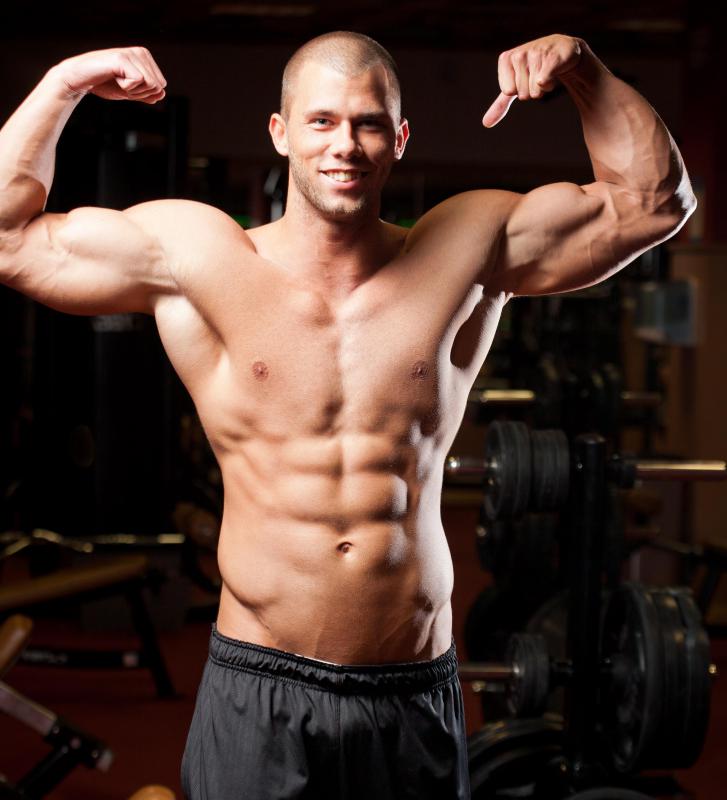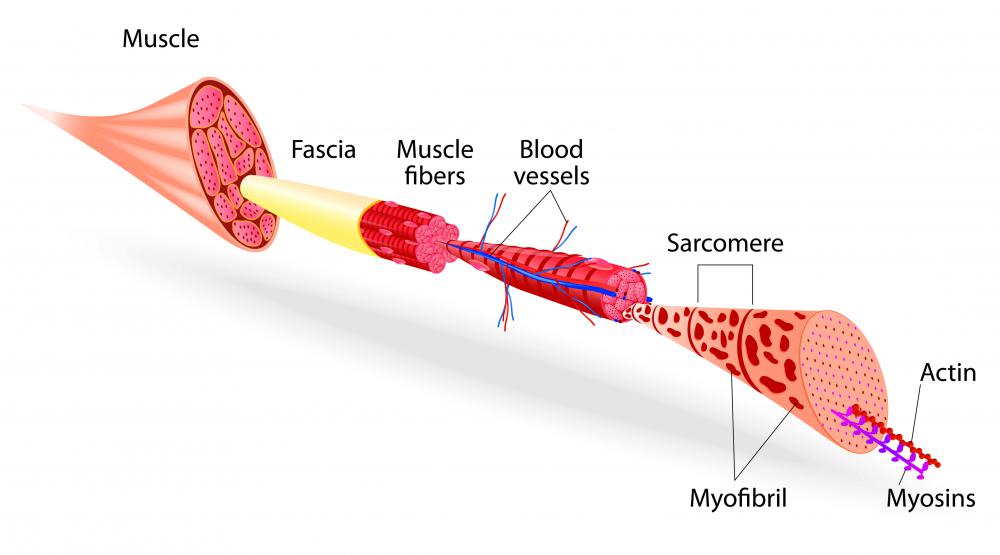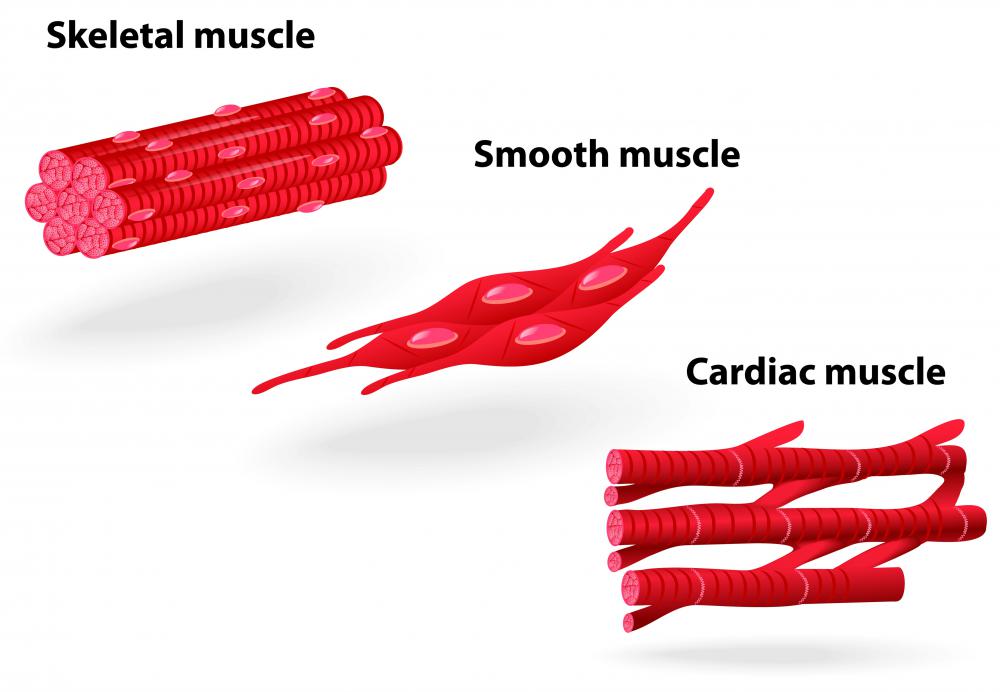At TheHealthBoard, we're committed to delivering accurate, trustworthy information. Our expert-authored content is rigorously fact-checked and sourced from credible authorities. Discover how we uphold the highest standards in providing you with reliable knowledge.
What is a Voluntary Muscle?
A voluntary muscle, often called a skeletal muscle, is one of three types of muscle in the body. Most voluntary muscles are used to move bones, though some, such as the muscles in the face, are used to create movements below the skin. Unlike cardiac or smooth muscle, these muscles can be controlled by the conscious mind.
As a part of the musculoskeletal system, each voluntary muscle is used to help a person move around. Most are connected to bones by connective tissue called tendons. The muscle is attached to a bone at a location called its origin. It then runs along the length of the entire bone and is attached to a bone on the other side of the joint at the insertion. The muscle moves the bone here at the insertion,

Muscles contract when a part of the body is moved. It is not possible for a voluntary muscle to extend on its own, so muscles work in opposing pairs. In each opposing pair, the muscle that contracts is known as the extensor, while the muscle that expands is known as the flexor. Switching the roles of extensor and flexor in an opposing pair of muscles causes the opposite movement to happen. For example, contracting the bicep in the upper arm causes the elbow to bend, while contracting the triceps, on the opposite side of the upper arm, causes the elbow to straighten out again.

There are some muscles that are not used to move bones. The muscles in the face are attached to the underside of the skin, which allows them to create a variety of different facial expressions. A slight movement by one or more of the 43 facial muscles results in one of the many different expressions that human beings are able to make. The tongue is also a voluntary muscle and is attached to the body at only one end. The wide range of movement in the tongue is possible because it is made up of a group of muscles that work closely together.

Each muscle is made up of muscle cells. These cells are fused together into fibers that run the entire length of the muscle. Two types of fibers, a thick fiber, known as myosin and a thin fiber, known as actin, alternate within a voluntary muscle. These alternating bands of fibers give the muscles a striped appearance, which is why they are sometimes known as striped or striated muscles.
AS FEATURED ON:
AS FEATURED ON:


















Discussion Comments
Most voluntary muscles are used to move bones, although some, such as muscles in the face, are used to create movements below the skin.
It is amazing when you realize how many muscles we have in our body. I don't think much about it until I end up doing something that causes me to have sore muscles and then I am very aware of it.
Even if I do new work out routine, I find that I will have sore muscles the next day. I use my voluntary skeletal muscles when I work out and concentrate on certain areas that I want to strengthen and tone.
I think keeping our muscles strong is one key to overall well being. It is never too late to begin muscle strength training and once your muscles adjust, you will feel much stronger.
My uncle had a stroke that affected the whole left side of his body. This also included the facial muscles on the left side of his face.
When something like this happens, you quickly realize how many voluntary and involuntary muscles you use every day and don't even realize it.
With a lot of therapy, he has made good progress but some things will never be quite the same again. It has been so frustrating for him to feel like he had no control over muscles that he previously had control of.
This makes it hard to feel comfortable in many social situations and can lead to depression because you don't want to go out in public as often.
He continues to have a pretty good attitude about it and although he still gets frustrated, he has made a lot of progress and can do a lot more than he could after he first had the stroke.
Post your comments